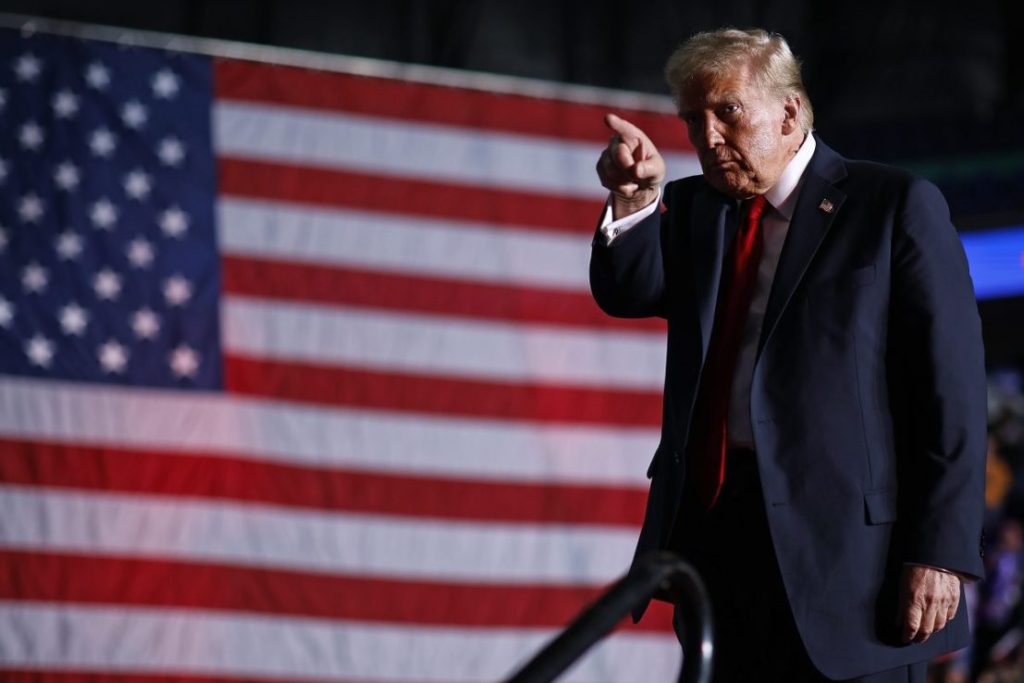Trump’s Fiery Rebuke: “Eat the Tariffs,” Not Your Customers
On Saturday, President Donald Trump took to social media to lash out at Walmart, insisting the retail giant should “eat the tariffs” imposed on imported goods rather than passing the extra costs onto its customers. The blistering comments followed Walmart’s announcement that it would be raising prices later this month due to high duties on Chinese-made merchandise.
“Walmart should STOP trying to blame Tariffs as the reason for raising prices throughout the chain,” Trump wrote. “Walmart made BILLIONS OF DOLLARS last year, far more than expected. Between Walmart and China they should, as is said, ‘EAT THE TARIFFS,’ and not charge valued customers ANYTHING.”
Walmart’s Tight Margins and Forced Price Hikes
Walmart CEO Doug McMillon explained on Thursday that, despite the retailer’s enormous scale, it could not absorb all the additional tariff costs without jeopardising its thin profit margins. While food prices would remain protected, general merchandise—Most of which is sourced from China—would face upward price pressure.
- Narrow retail margins: Even the world’s largest retailer cannot swallow all increased costs.
- Food protection: Walmart commits to shielding grocery prices from tariff-related hikes.
- General merchandise: Expected to bear the brunt of higher duties on imported goods.
Retail Bellwether Amid Trade Tensions
Walmart’s candid disclosure is seen as a key indicator of how the ongoing trade war with China is impacting the broader retail sector. As geopolitical friction intensifies, many U.S. companies have cut or withdrawn full-year guidance in response to rising costs and shifting consumer spending habits.
With narrow margins and unparalleled purchasing power, Walmart’s decisions often serve as a barometer for industry health. More than 255 million people shop in Walmart stores or online every week, and 90 percent of Americans live within 10 miles of a location.
Consumers Feel the Squeeze
Higher prices at Walmart could erode consumer confidence and force budget-sensitive shoppers to make difficult trade‐offs. In surveys, many consumers cite rising grocery and household goods costs as the top driver of financial stress.
- Staples and household items: A potential 2–3 percent uptick in prices could impact millions of families.
- Lower-income shoppers: More likely to feel immediate pain from even slight increases.
- Alternative channels: Shoppers may shift to discount chains or online marketplaces to avoid higher prices.
Trump’s Message and Political Stakes
By publicly challenging Walmart, Trump aimed to underscore his administration’s stance against raising living costs. Economists note, however, that absorbing tariffs without price adjustments would cut sharply into Walmart’s already slim operating margins.
In the wider political context, controlling inflation remains a top priority for voters. Any indication that President Trump’s tariff policies are driving price hikes risks becoming a contentious issue in upcoming campaigns.
Amazon’s Brief Contention and White House Backlash
Walmart’s statement arrives after a Reuters report claimed that Amazon planned its own disclosure on the impact of Trump-imposed tariffs. The White House quickly criticised the report, and Amazon publicly denied any intention to detail tariff costs at this time.
- Amazon denial: Publicly refuted claims of an imminent tariff‐impact announcement.
- White House response: Charged Amazon with attempting to shift blame for rising prices.
- Retail rivalry: Competition intensifies as both Walmart and Amazon navigate higher import duties.
Global Markets and Debt-Fueled Stimulus
Trump’s broader strategy of imposing tariffs aims to protect American manufacturing and reduce trade deficits. Yet such measures have also rattled global markets, prompting investors to reassess growth projections for the U.S. economy.
Consumers and businesses alike face higher costs for a wide array of goods, from electronics to clothing. The administration has countered that the additional revenue generated by tariffs will fund infrastructure projects and future stimulus, but critics argue that the burden on everyday Americans could outweigh long-term benefits.
What Lies Ahead for Retail Consumers
In the weeks ahead, all eyes will be on Walmart and other major retailers to see how they adjust their pricing strategies. Will they follow Walmart’s lead in modestly raising prices, or attempt to absorb the costs and risk lower profits?
For shoppers, the takeaway is clear: higher tariffs are likely to translate into higher shelf prices. Consumers may need to shop strategically—comparing unit prices, seeking bulk discounts, and exploring loyalty programmes—to mitigate the impact of this latest retail challenge.
